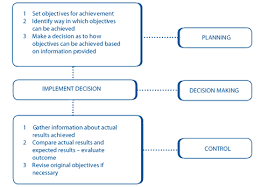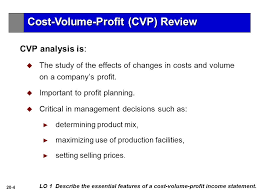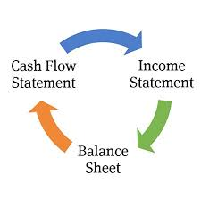
How managers use accounting for decision making
How managers use accounting for decision making
Order Instructions:
In preparation, submit an annotated bibliography of 10 or more resources you related to the topic of your Final Paper.
My Topic : ” How can managers use accounting information to make better decisions ?”
****** Instructions: Please submit all 10 annotated bibliography as it pertains to my topic ( see above) !!!!!!!
Please review the General Format of an Annotated Bibliography document located in the Weeks 2–3 Learning Resources.
For each entry, be sure to do the following as a minimum:
Include the full APA citation.
Discuss the scope of the resource.
Discuss the purpose and philosophical approach or methodology.
Discuss the underlying assumptions.
Relate the resource to the body of resources you have consulted in this course.
Discuss any evident limitations and opportunities for further inquiry.
Your annotated bibliography is due Day 7 of Week 3.
SAMPLE ANSWER
Topic: How managers can use accounting information in making better decisions
Briciu, S., Scorţe, C., & Meşter, I. (2013). The impact of accounting information on managerial decisions – Empirical study conducted in the hospitality industry entities in Romania. Theoretical & Applied Economics, 20(9), 27-38.
Briciu, Scorte and Mester (2013) conducted an empirical research which is based upon a survey carried out from November 2012 to January 2013. They administered online questionnaires to managers of 91 organizations in the tourism and hospitality sector. The findings revealed that the managers surveyed can use accounting information to determine the company’s funding needs. The managers analyze revenue to determine the amount of funds that would be available to finance future projects (Briciu, Scorte & Mester, 2013). The study’s limitation is that the questionnaire contained so many questions totalling 38 questions which called for maximum concentration of the study subjects and some managers lost patience while completing the questionnaire.
Dumitrana, M., Radu, G., Dumitru., & Jinga, G. (2010). The use of the accounting information in decision making in the hospitality business. International Journal of Contemporary Hospitality Management, 17(1): 39-50
Accounting information, managerial accounting information in particular, has been utilized and analyzed extensively in the context of manufacturing firms. Few studies have been done on the utilization of managerial accounting information in aiding the process of decision making in the hospitality sector. Dumitrana et al. (2010) sought to fill this gap in existing knowledge. They discovered that accounting information could be utilized by managers in budgeting. Managers utilize the continuous flow of accounting information related to overhead, investments, purchases and income to create budget for the following year. The weakness of their study is that the research was conducted in only 2 hotel organizations hence the findings cannot be generalized in other organizations and organizational settings.
Florin, B. (2014). Development of decision making by managers with financial and accounting information. Annals Of The University Of Oradea, Economic Science Series, 23(1), 837-844.
As per the author of this article, accounting information is of great importance in improving the effectiveness of the fiscal function and assists managers in making managerial decisions. As used in manufacturing, accounting information is employed by managers in deciding whether to purchase or to make – in buy or make analysis – a particular component which the company requires in order to make its primary product (Florin, 2014).
Gheorghe, D. (2012). The accounting information quality concept. Economics, Management & Financial Markets, 7(4), 326-336.
Good accounting information is able to respond to the requirements of an organization and help in managerial decision making. Accounting information in the form of fiscal reports can be used by managers to guide the future of an organization. Balanced scorecards, fiscal statement projections, and budgeting are some of the ways in which managerial accounting information is employed in providing information to assist managers in guiding the future of the organization. When managers focus on this data, they are able to make decisions which aim for constant improvement and are justified basing upon intelligent analysis of the company’s data (Gheorghe, 2012).
Lengauer, V., Mayr, A., & Parasote, S. (2011). The impact of accounting information on management’s decision-making process. The Accounting Review, 12(67): 511-525
In their study, Lengauer, Mayr and Parasote (2011) examined the impact that accounting information has on the decision-making process of a company’s management. The managers of a particular company known as Wexiodisk AB, a manufacturer of dishwashing machines, were interviewed. Their findings demonstrated that managers at the company utilize accounting information for budgeting purposes and to determine the funding needs of the company’s upcoming ventures.
Miculescu, C., & Miculescu, M. N. (2012). Quality of accounting information to optimize the decisional process. Annals Of The University Of Oradea, Economic Science Series, 21(2), 694-699.
Accounting information is valuable when used in a decisional process. In their study, Miculescu and Miculescu (2012) found that managers can utilize accounting information in determining what needs to be sold and how it should be sold – using the process of relevant cost analysis – and in determining whether to stop operations or increase product lines. Moreover, managers utilize accounting information to decide which consumers are less or more profitable so that marketing efforts could be focused on customers that are most profitable (Miculescu & Miculescu, 2012).
Scorţe, C., & Farcaş, M. (2013). The impact of accounting information on managerial decisions – Theoretical approaches. Annals Of The University Of Oradea, Economic Science Series, 22(2), 692-702.
In this peer-reviewed journal article, Scorte and Farcas (2013) conducted a literature review on accounting information as it is applied within the hospitality sector. They also carried out literature review on the topic of management accounting in this particular industry. Scorte and Farcas (2013) learned that accounting provides the information which is essential for monitoring, for establishing the extent of liability and the result produced at different places of work, which facilitates the detection of internal reserves, of uneconomic and unnecessary spending and of losses. This way, accounting information contributes to the fulfilment of strategic objectives. Managers in the tourism and hospitality industry also use accounting information in making appropriate financial and economic decisions. Furthermore, accounting information acts as an advisor which aids managers in determining the conditions wherein the company is operating at both macro-economic and micro-economic levels (Carmen & Mariana, 2013).
Silviu-Virgil, C. (2014). The importance of the accounting information for the decisional process. Annals Of The University Of Oradea, Economic Science Series, 23(1), 593-603.
In his qualitative research study, Silviu-Virgil (2014) reviews a number of books and articles which have looked into the topic of accounting information from a managerial decision viewpoint. The author found that accounting information is in actual fact the raw material for the process of managerial decision making. Managers can utilize accounting information to help attain organizational goals. Moreover, accounting information could be employed to aid in budgeting and in analyzing whether to purchase or make a component in-house.
Socea, A. D. (2012). Managerial decision-making and financial accounting information. ScienceDirect, Elsevier. Procedia – Social and Behavioural Sciences, 58(12): 47-55
In this journal article, Socea (2012) looks into the role played by fiscal accounting information in managerial decision-making. The author states that for fiscal accounting information to be of use for decision making, it should be comparable, dependable, relevant and intangible. The results of his study indicate that managers utilize financial accounting information in knowing what took place previously and to know what is the organization’s present situation. Furthermore, managers utilize fiscal accounting information in making visible the events which are not noticeable by everyday activities. It also provides managers with a quantitative overview of the organization over and above helping managers in preparing for future decisions and activities (Socea, 2012).
Tunji, S. T. (2012). Accounting information as an aid to management decision making. International Journal of Management and Social Sciences Research, 1(3):29-34
In his study, Tunji (2012) analyzes how accounting information helps in management decision making. Using survey research design, the author enlisted 55 participants and data was gathered from them with the use of a questionnaire. A number of hypotheses were developed. The findings indicated that managers utilize both non-fiscal and fiscal accounting information in aiding business decision-making. In particular, they utilize accounting information to monitor the organization’s performance, and to monitor the process of decision making. Since accounting information provides more timely information, managers also use it in improving the efficiency of operations.
References
Briciu, S., Scorţe, C., & Meşter, I. (2013). The impact of accounting information on managerial decisions – Empirical study conducted in the hospitality industry entities in Romania. Theoretical & Applied Economics, 20(9), 27-38.
Dumitrana, M., Radu, G., Dumitru., & Jinga, G. (2010). The use of the accounting information in decision making in the hospitality business. International Journal of Contemporary Hospitality Management, 17(1): 39-50
Gheorghe, D. (2012). The accounting information quality concept. Economics, Management & Financial Markets, 7(4), 326-336.
Florin, B. (2014). Development of decision making by managers with financial and accounting information. Annals Of The University Of Oradea, Economic Science Series, 23(1), 837-844.
Lengauer, V., Mayr, A., & Parasote, S. (2011). The impact of accounting information on management’s decision-making process. The Accounting Review, 12(67): 511-525
Miculescu, C., & Miculescu, M. N. (2012). Quality of accounting information to optimize the decisional process. Annals Of The University Of Oradea, Economic Science Series, 21(2), 694-699.
Scorţe, C., & Farcaş, M. (2013). The impact of accounting information on managerial decisions – Theoretical approaches. Annals Of The University Of Oradea, Economic Science Series, 22(2), 692-702.
Silviu-Virgil, C. (2014). The importance of the accounting information for the decisional process. Annals Of The University Of Oradea, Economic Science Series, 23(1), 593-603.
Socea, A. D. (2012). Managerial decision-making and financial accounting information. ScienceDirect, Elsevier. Procedia – Social and Behavioural Sciences, 58(12): 47-55
Tunji, S. T. (2012). Accounting information as an aid to management decision making. International Journal of Management and Social Sciences Research, 1(3):29-34
We can write this or a similar paper for you! Simply fill the order form!












